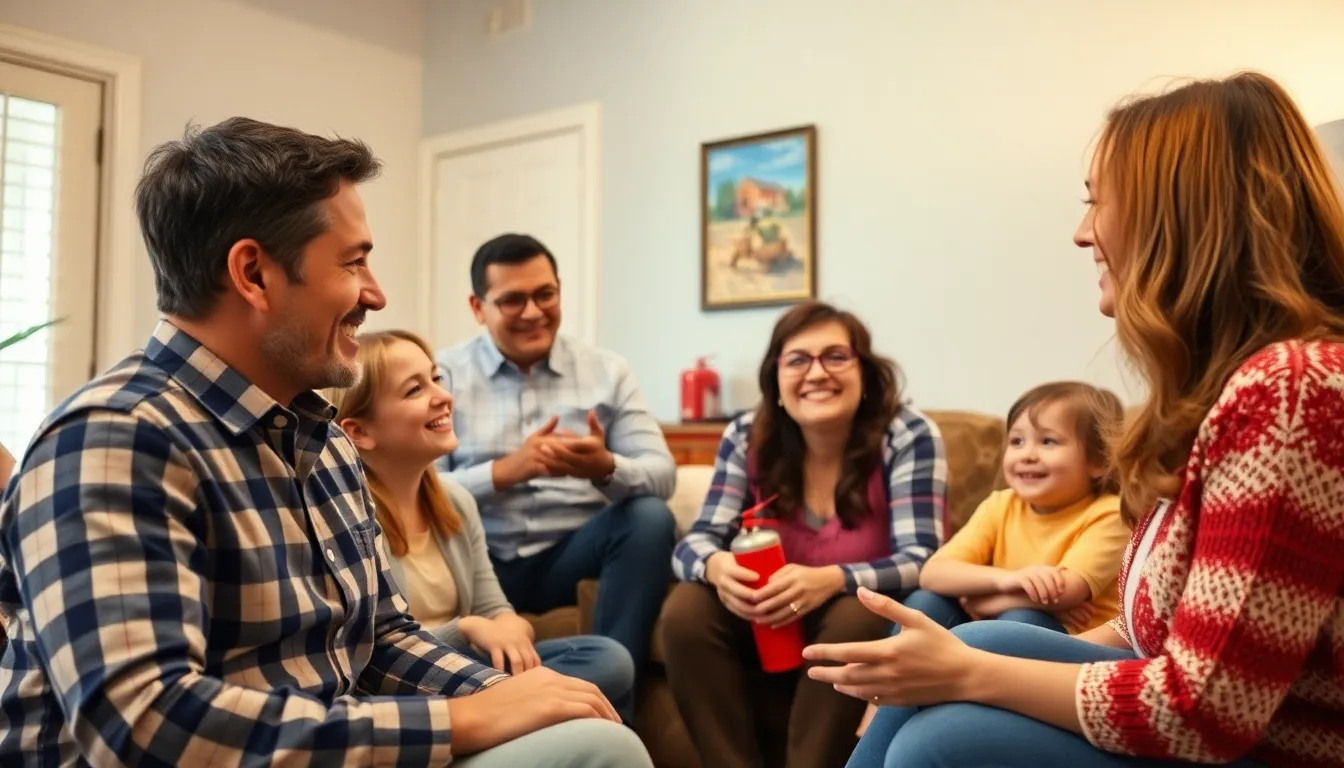Table of Contents
ToggleHome should be a sanctuary, a place where one can kick off their shoes and let out a deep sigh of relief. But let’s be honest—sometimes it feels more like a game of dodgeball with potential hazards lurking around every corner. From slippery floors to mischievous pets, home safety isn’t just a checklist; it’s a lifestyle choice that keeps everyone safe and sound.
Imagine a world where you can relax without the nagging worry of an accident waiting to happen. With a few simple steps, you can transform your home into a fortress of safety. So grab your favorite snack, settle in, and let’s dive into the essentials of home safety. After all, a secure home is a happy home, and who wouldn’t want that?
Understanding Home Safety
Home safety acts as a foundation for well-being, ensuring every individual feels secure in their space. Prioritizing a safe home environment enhances peace of mind and protects loved ones from various risks.
Importance of Home Safety
Ensuring safety at home significantly reduces accidents and injuries. A secure home fosters a sense of comfort, allowing occupants to thrive. Statistics show that nearly 6 million home injuries occur annually, emphasizing the need for preventive measures. Investing in home safety measures not only protects residents but also lowers insurance costs. Moreover, teaching children about safety reinforces lifelong habits.
Common Home Hazards
Identifying common hazards is crucial for maintaining safety. Slippery floors pose a significant risk, leading to falls and injuries. Unstable furniture can tip over, especially in households with small children. Electrical hazards often arise from frayed cords and overloaded outlets. Additionally, lack of smoke detectors can increase the danger during a fire. Cluttered hallways restrict movement, creating trip hazards. Recognizing these risks enables proactive approaches to safeguard the home environment.
Home Safety Tips

Home safety encompasses various protective measures that enhance the overall security of your living space. The following sections detail essential practices to ensure a safer home environment.
Fire Safety Measures
Fire safety measures play a crucial role in protecting lives and property. Install smoke detectors on every level of the home, checking batteries monthly for functionality. Develop a fire escape plan that includes multiple exit routes, ensuring every household member is familiar with it. Keep a fire extinguisher in easily accessible locations, particularly in kitchens and garages. Regularly review and update home appliances, ensuring wiring is intact and appliances are used safely. Practicing these precautions significantly reduces the risk of fire incidents.
Preventing Burglary
Preventing burglary requires awareness and proactive strategies. Install deadbolts on exterior doors to enhance security. Utilize motion-activated lights around entry points, deterring potential intruders. Keep windows locked and secure at all times, especially on the ground floor. Building relationships with neighbors encourages a community watch approach, enhancing vigilance in the neighborhood. By incorporating these methods, homeowners create a more secure environment that minimizes the risk of burglary.
Essential Safety Equipment
Investing in essential safety equipment enhances home security and helps prevent accidents. The following items significantly contribute to a safer living environment.
Smoke Detectors and Alarms
Smoke detectors represent a crucial aspect of fire safety at home. Installing detectors on every level ensures that they easily detect smoke or fire, providing alerts when needed. Regular testing and battery replacement guarantee their optimal performance. Statistics reveal that homes with functional smoke detectors reduce fire-related fatalities by 50%. A combination of photoelectric and ionization models offers comprehensive coverage, enhancing safety measures across the residence.
Security Systems
Security systems play a vital role in deterring burglaries and protecting property. Modern systems often include cameras, alarms, and motion sensors that alert homeowners of intrusions. Choosing a system with 24/7 monitoring enhances response times and provides peace of mind. Many devices integrate with smart home technology, allowing remote access and control. Utilizing security systems can lower homeowners’ insurance premiums, making them a wise investment. Prioritizing a robust security setup significantly increases safety and discourages criminal activities.
Childproofing Your Home
Childproofing enhances safety for young ones at home. Creating a secure environment means preventing accidents and ensuring peace of mind for caregivers.
Safe Play Areas
Designate safe play areas within the home. Choose spaces away from hazards, such as stairs or sharp furniture. Soft surfaces like carpets or mats reduce injury risk during falls. Toys should remain age-appropriate and free from small parts, which can pose choking hazards. Regularly check toy quality to ensure nothing is broken or sharp. Arranging furniture to create clear pathways fosters safe movement, further minimizing accidents.
Toxic Substances to Avoid
Identifying and removing toxic substances from reach is crucial. Common household items, including cleaning supplies, medications, and plants, often contain harmful ingredients. Store chemicals in locked cabinets, keeping them out of children’s reach. Choose non-toxic cleaning products whenever possible to reduce risks. Familiarize yourself with common poisonous plants; removing or securing them prevents potential ingestion. Awareness and proactive measures significantly decrease the chance of accidental poisonings, protecting children’s health.
Home safety is an essential aspect of daily life that shouldn’t be overlooked. It’s about creating an environment where everyone feels secure and protected from potential hazards. By adopting proactive measures and investing in safety equipment, individuals can significantly reduce risks and enhance their overall well-being.
Prioritizing safety not only protects loved ones but also fosters a sense of peace and happiness within the home. As families embrace these practices, they cultivate a culture of awareness and responsibility that benefits everyone. A commitment to home safety transforms living spaces into true sanctuaries where comfort and security coexist.




